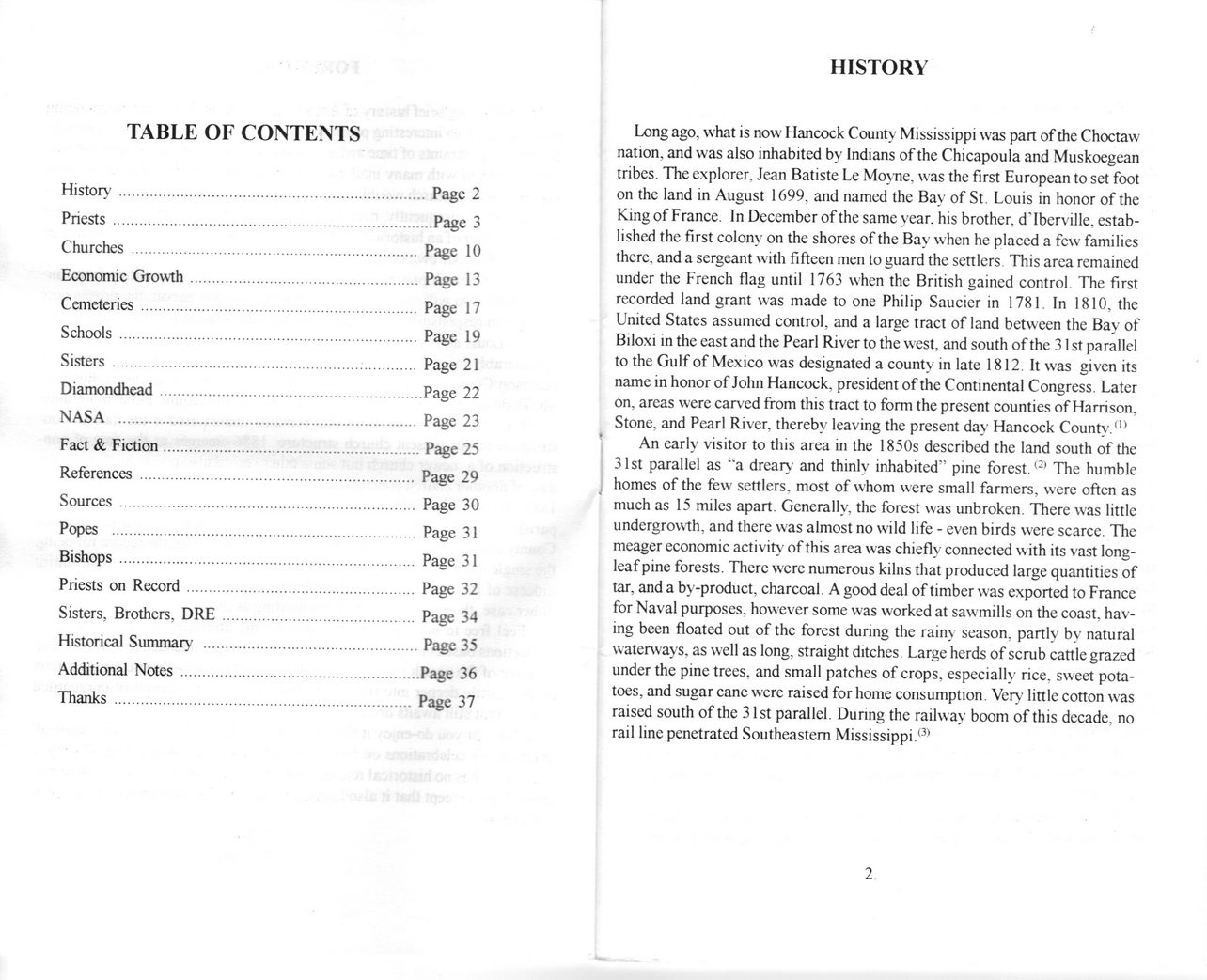This text was obtained via automated optical character recognition.
It has not been edited and may therefore contain several errors.
TABLE OF CONTENTS History ................................................. Page 2 P nests ......................................................Page 3 Churches ................................................ Page 10 Economic Growth..........................................Page 13 Cemeteries .............................................. Page 17 Schools ................................................. Page 19 Sisters ................................................. Page 21 Diamondhead.................................................Page 22 NASA .................................................... Page 23 Fact & Fiction..............................................Page 25 References .............................................. Page 29 Sources ................................................. Page 30 Popes ................................................... Page 31 Bishops ................................................. Page 31 Priests on Record........................................ Page 32 Sisters, Brothers, DRE .................................. Page 34 Historical Summary .........................................Page 35 Additional Notes ...........................................Page 36 Thanks .................................................. Page 37 HISTORY Long ago, what is now Hancock County Mississippi was part of the Choctaw nation, and was also inhabited by Indians of the Chicapoula and Muskoegean tribes. The explorer, Jean Batiste Le Moyne, was the first European to set foot on the land in August 1699, and named the Bay of St. Louis in honor of the King of France. In December of the same year, his brother, d'lberville, established the first colony on the shores of the Bay when he placed a few families there, and a sergeant with fifteen men to guard the settlers. This area remained under the French flag until 1763 when the British gained control. The first recorded land grant was made to one Philip Saucier in 1781. In 1810, the United States assumed control, and a large tract of land between the Bay of Biloxi in the east and the Pearl River to the west, and south of the 31 st parallel to the Gulf of Mexico was designated a county in late 1812. It was given its name in honor of John Hancock, president of the Continental Congress. Later on, areas were carved from this tract to form the present counties of Harrison, Stone, and Pearl River, thereby leaving the present day Hancock County.(1> ! An early visitor to this area in the 1850s described the land south of the 31st parallel as ?a dreary and thinly inhabited? pine forest.<2) The humble j homes of the few settlers, most of whom were small farmers, were often as much as 15 miles apart. Generally, the forest was unbroken. There was little undergrowth, and there was almost no wild life - even birds w'ere scarce. The meager economic activity of this area was chiefly connected with its vast long-leaf pine forests. There were numerous kilns that produced large quantities of tar, and a by-product, charcoal. A good deal of timber was exported to France for Naval purposes, however some was worked at sawmills on the coast, having been floated out of the forest during the rainy season, partly by natural waterways, as well as long, straight ditches. Large herds of scrub cattle grazed under the pine trees, and small patches of crops, especially rice, sweet potatoes, and sugar cane were raised for home consumption. Very little cotton w'as raised south of the 31 st parallel. During the railway boom of this decade, no rail line penetrated Southeastern Mississippi.? 2.

Annunciation Church Kiln 003